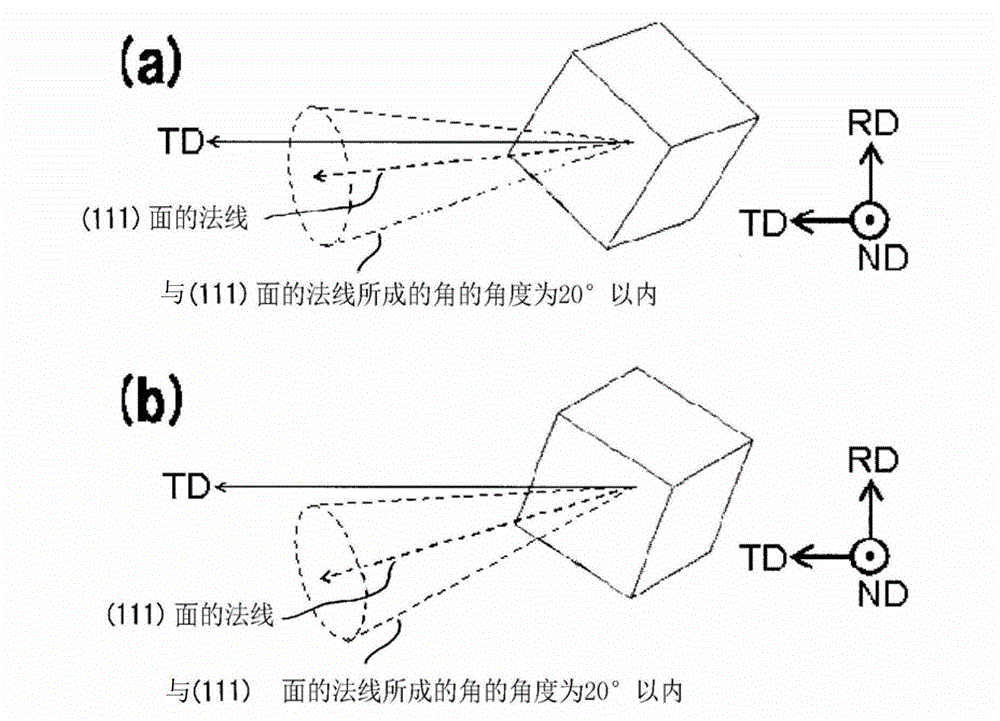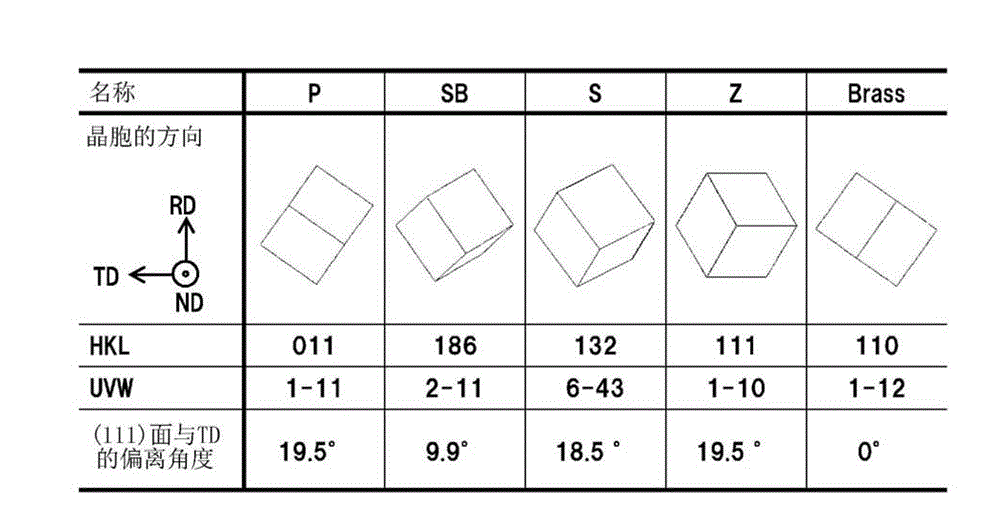Copper alloy sheet and manufacturing method for same
A manufacturing method and technology of copper alloys, applied in the direction of metal rolling, metal/alloy conductors, conductive materials, etc., can solve the problems of inability to maintain initial contact pressure, self-heating, stress relaxation, etc.
- Summary
- Abstract
- Description
- Claims
- Application Information
AI Technical Summary
Problems solved by technology
Method used
Image
Examples
Embodiment 1
[0164] An alloy containing the elements in the alloy composition column of Table 1 and the remainder consisting of copper and unavoidable impurities was melted in a high-frequency melting furnace, and cast to obtain an ingot (w100mm×l200mm×t40mm). The ingot is subjected to a homogenization heat treatment at 700° C. to 1020° C. for 10 minutes to 10 hours, and then the first high-temperature rolling and the second high-temperature rolling of the following steps A, B, or E are performed.
[0165] (Process A)
[0166] After the first high-temperature rolling (processing rate: 20% to 90%) at a processing temperature of 800°C to 1000°C, water cooling is performed at a cooling rate of 5 to 100°C / second to rapidly cool to room temperature, and then heated to 650 ℃, and at a processing temperature of 450 ℃ ~ 650 ℃ for the second high temperature rolling (processing rate 60% ~ 95%).
[0167] (Process B)
[0168] After the first high-temperature rolling (processing rate 20% to 90%) at ...
Embodiment 2
[0197] An alloy containing the elements in the alloy composition column of Table 2 and the remainder consisting of copper and unavoidable impurities was melted in a high-frequency melting furnace, and cast to obtain an ingot (w100mm×l200mm×t40mm).
[0198] Thereafter, the ingot is subjected to a homogenization heat treatment at 700° C. to 1020° C. for 10 minutes to 10 hours, and then the first high-temperature rolling and the second high-temperature rolling of the following steps C, D, or E are performed. Process E was carried out in the same manner as in Example 1.
[0199] (Process C)
[0200] After the first high-temperature rolling (processing rate: 20% to 90%) at a processing temperature of 700°C to 1000°C, water cooling is performed at a cooling rate of 5 to 100°C / second to rapidly cool to room temperature, and then heated to 550 ℃, and the second high-temperature rolling is performed at a processing temperature of 400°C to 550°C (processing rate 60% to 95%).
[0201] ...
Embodiment 3
[0209] An alloy containing the elements in the alloy composition column of Table 3 and the remainder consisting of copper and unavoidable impurities was melted in a high-frequency melting furnace, and cast to obtain an ingot (w100mm×l200mm×t40mm).
[0210] Thereafter, the ingot is subjected to a homogenization heat treatment at 700° C. to 1020° C. for 10 minutes to 10 hours, and then the first high-temperature rolling and the second high-temperature rolling shown in Steps C, D, or E of Example 2 are performed. High temperature calendering.
[0211] The above-mentioned processes after processing by process C, D or E and after cold rolling are the same as in Example 1, thereby producing the copper alloys of Examples 3-1 to 3-12 of the present invention and Comparative Examples 3-1 to 3-7 The characteristics of the plate samples were investigated in the same manner as in Example 1. The results are shown in Table 3.
[0212] table 3
[0213]
[0214] As shown in Table 3, Inv...
PUM
| Property | Measurement | Unit |
|---|---|---|
| Thickness | aaaaa | aaaaa |
| Thickness | aaaaa | aaaaa |
| Width | aaaaa | aaaaa |
Abstract
Description
Claims
Application Information
 Login to View More
Login to View More - R&D
- Intellectual Property
- Life Sciences
- Materials
- Tech Scout
- Unparalleled Data Quality
- Higher Quality Content
- 60% Fewer Hallucinations
Browse by: Latest US Patents, China's latest patents, Technical Efficacy Thesaurus, Application Domain, Technology Topic, Popular Technical Reports.
© 2025 PatSnap. All rights reserved.Legal|Privacy policy|Modern Slavery Act Transparency Statement|Sitemap|About US| Contact US: help@patsnap.com



